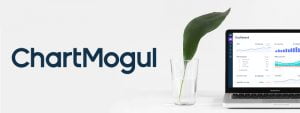Understanding your startup’s burn rate and runway is key to managing finances. Burn rate tracks how quickly you’re spending cash, while runway calculates how many months you can operate before funds run out. This article will help you understand what is burn rate and calculating runway.
How to Calculate Runway
It’s more accurate to utilise your average burn rate for this calculation (you may get it by hand or with the help of the calculator above). Divide the amount of money you now have by your usual burn rate.
Runway = Total cash held ⁄ Average burn rate = # months before you run out of money
The amount that results represent the number of months you have left before running out of money (assuming that you don’t add further venture capital investment and that your expenses and income remain constant).
The calculator above can provide a graph of your runway if that would be of interest.
Including Investor Funding
The easiest location to get the information you need in a cash flow statement (sometimes called the statement of cash flows). You don’t need to change the statistics you see if you want to know your burn rate while accounting for venture capital funding.
Subtract the cash balance for the month from the cash balance from the prior month to determine the burn rate for that particular month.
Burn Rate = Cash balance in prior month – Cash balance in current month
Put simply, your monthly net cash expenditure is your burn rate.
What Does It Mean if Your Burn Rate Is Negative or Zero?
The above formula typically yields a value that is equal is equal to or greater than zero. However, there are few circumstances where your burn rate might be reported as negative. This indicates that your income is more than your expenses. If you recently received funding, your burn rate for that month may be negative because it seems like you are making money overall.
It may mean that your revenues are finally more than your expenses if you haven’t raised any additional capital from investors. You are making and spending the same amount of money if your burn rate is zero. However, burn rate becomes useless once your firm is making more money than it is spending. It’s not a useful statistic for firms whose expenses still exceed their earnings.
Excluding Investor Funding
Regardless of continued funding, a lot of business founders are interested in knowing their burn rate. it’s the same method, except when applicable, you should deduct any recent funding from your overall cash.
Burn Rate = (Cash balance in prior month – VC funding) – (Cash balance in current month – VC funding)
If you want to know how close you are to recovering costs from activities that generate revenue alone, this is useful. You can also use it as a starting point to determine how long your business would survive if you stopped raising money.
Calculating Average Burn Rate
For as many months as you’d like, repeat the above technique to determine your average burn rate. Divide the total monthly burn rates by the number of months that are included. For instance, you would sum up all of the burn rates and divide the result by three to get your average burn rate for the last three months. You can find your company’s burn rate for each month that is included in the calculator above, along with your average burn rate.
How Burn Rate and Startup Runway Are Related
You may compute runway (i.e., the number of months until your business runs out of cash) using your burn rate computation. You may use that pattern to extrapolate and determine how many months it would take before you “burn” through your cash balance because burn rate shows the net amount of cash that left your account in a given month. This is how the startup runway is calculated.
How to Calculate Runway
It’s more accurate to utilise your average burn rate for this calculation (you may get it by hand or with the help of the calculator above). Divide the amount of money you now have by your usual burn rate.
Runway = Total cash held ⁄ Average burn rate = # months before you run out of money
The amount that results represent the number of months you have left before running out of money (assuming that you don’t add further venture capital investment and that your expenses and income remain constant).
The calculator above can provide a graph of your runway if that would be of interest.
An Example Startup Runway Calculation
Let’s imagine your current cash holdings are $150,000 and last month’s cash holdings were $200,000.
Runway = $200,000 – $150,000 = $50,000
Since you currently have $150,000, we can use that information to calculate your runway:
Runway = $150,000 / $50,000 = 3 months
In this example, your startup has only 3 months of cash before running out of money
Does Your Startup Have Enough Runway?
It is your responsibility to interpret burn rate and runway (or your CFO, Head of Finance, or accountant, depending on who is assisting you). As your firm develops, you’ll need to continuously assess how much cash you’ll require.
Is there enough runway for you? That is contingent upon the amount of time you estimate it will take to obtain further funds or to begin generating enough income to cover costs.
It is obvious that you don’t have enough runway if you have only three months left, and your product won’t launch for another six months. However, three months of runway is less concerning (though it is still concerning) if your revenues are increasing and your product has just been released. Additionally, you would be well-positioned if you anticipated receiving funds in a couple of months.
As you can see, how runway and burn rate are interpreted depends on the particulars of a certain company. However, it might be useful to check average runway statistics for businesses at various stages so you can use average figures as a guide to determine things like how much financing you could need and how soon you should spend investor money.
After analysing a ton of funding data from Crunchbase, Radicle Labs’ Head of Data Science, Sebastian Quintero, published this chart on Medium explaining how much runway you need:
| Financing Round | Average Time Lapse | Median Time Lapse |
| Seed to Series A | 18.1 mo. | 15.0 mo |
| Series A to Series B | 20.3 mo. | 17.0 mo. |
| Series B to Series C | 22.0 mo. | 19.0 mo. |
| Series C to Series D | 21.7 mo. | 19.0 mo. |
| Series D to Series E | 20.8 mo. | 18.0 mo. |
| Overall | 20.6 mo. | 18.0 mo. |
You can find out how far you deviate from average using that chart and your runway stats. By extension, you may want to look into ways to increase your runway or reduce your burn if you only have ten months of runway when most individuals need twenty months to go from Series A to Series B. Alternatively, you can just know that you stand out from the crowd but that your unique business model makes that acceptable (for instance, if you anticipate revenue sooner than most companies in your industry).
Should You Reduce Your Burn Rate?
It is worthwhile to investigate the cause of your burn rate if it appears elevated in comparison to your colleagues or if you feel anxious about the remaining runway.
Many founders are eager to believe they should minimise their burn rate, but that’s not always the case. Depending on how you’re using your funds and the impact that has on your business. It’s usually a good use of funds if, for example, your high burn rate is offset by the salary of excellent engineers, salespeople, and marketers.
However, you may be able to reduce expenses if you discover that you have paid for subscriptions to products that your team isn’t utilising or that don’t have a significant enough impact.
It is ultimately up to you to determine whether your burn rate makes sense given how much you are spending in the future of your business.
Conclusion
Accurately assessing the financial health of your business and understanding your burn rate and runway are critical steps in obtaining capital. Venture capitalists, particularly if you haven’t released a product yet, think that your company’s burn rate is an important statistic for making decisions.
If investors ask questions, which they will, you’ll want to be prepared with these figures. It’s a part of a bigger analysis showing how much revenue you need and by when, if you don’t intend to pursue funding again.
Instead of handling it yourself, would you want to have a burn rate report handed to you? Request management reports with our startup accountants today.
Was this article helpful?
Related Posts
- Separation, you, and your company
Divorce presents emotional and financial challenges. Careful handling, effective planning are crucial.
- Benefits Of Combining Your Tax Accounting And R&D Tax Incentive Service
People often asked whether it is compulsory to have their R&D tax compliance and tax…
- Startup Accounting Policies
Startups often have unique business models which can raise difficult questions about the most appropriate…
- Guide to Establishing Your Startup's Financial Tech Stack
Accomplished tech companies often share a common trait: a considered approach to building a robust…















